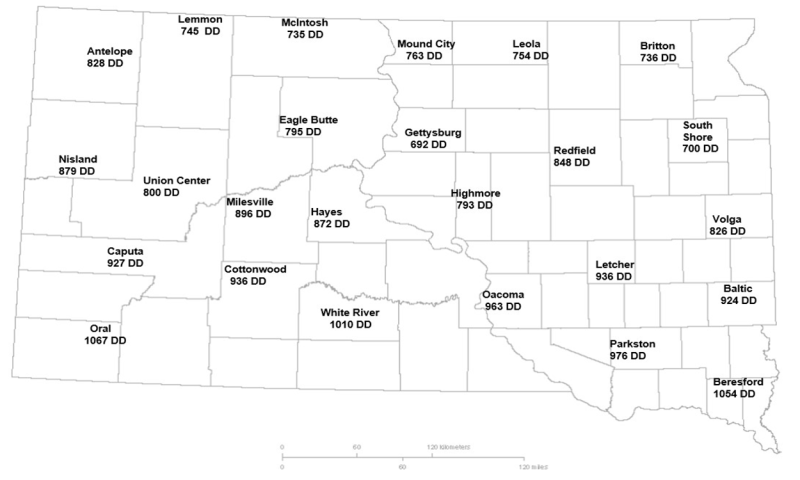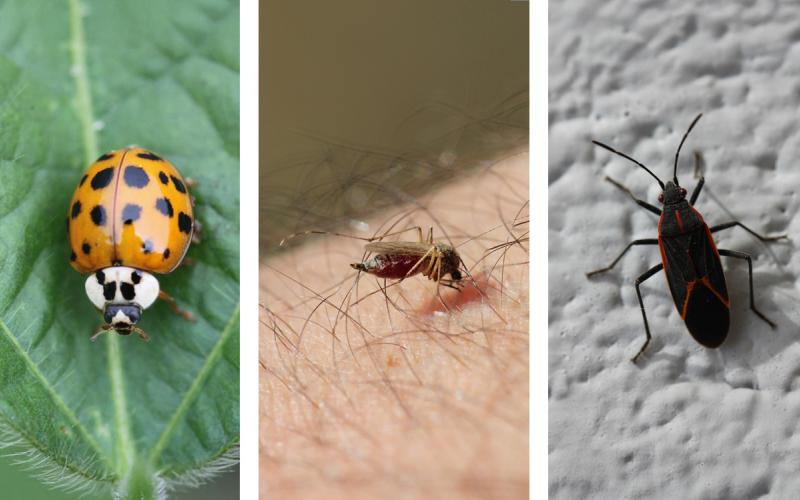
Written collaboratively by Adam Varenhorst, Philip Rozeboom, Patrick Wagner, and Brad McManus.
Originally Submitted: May 24, 2024
Throughout South Dakota, common stalk borer caterpillars are still active in alternative weed and grass hosts.
As a continued reminder it is important to not manage weeds along the edges of corn fields at this time as killing the alternative hosts will increase the likelihood of the caterpillars moving into corn seedlings.
Predicting Common Stalk Borer Migration Into Corn Fields With Degree Days
The hatching and movement of common stalk borer caterpillars can be estimated by using degree days with a developmental threshold of 41 degrees Fahrenheit. Common stalk borer eggs typically begin to hatch at 575 degree days. The caterpillars finish hatching and begin development on weeds and grasses at 750 degree days. At 1,300 degree days, 10% of the caterpillars will begin moving to corn. Corn should begin to be scouted at this point. At 1,400 degree days, 50% of the caterpillars will or have moved into corn.
As a reminder, the equation for degree days is:
(Maximum Daily Temperature + Minimum Daily Temperature) ÷ 2 - The Developmental Threshold
| Accumulated Degree Days |
Common Stalk Borer Caterpillar Activity |
Recommendation |
|---|---|---|
| 0-574 | Conditions favorable for egg hatch. | No scouting necessary. |
| 575-749 | Eggs begin to hatch. | No scouting necessary. |
| 750-1299 | Young caterpillars begin boring into grass and weeds. | No scouting necessary. Avoid spraying grass and weeds along field edges. |
| 1300-1399 | 10% of caterpillars begin moving into adjacent corn. | Begin scouting field edges for defoliation. |
| 1400-1700 | 50% of caterpillars moving into adjacent corn. | Continue scouting for defoliation along field edges. Spray if necessary. |


